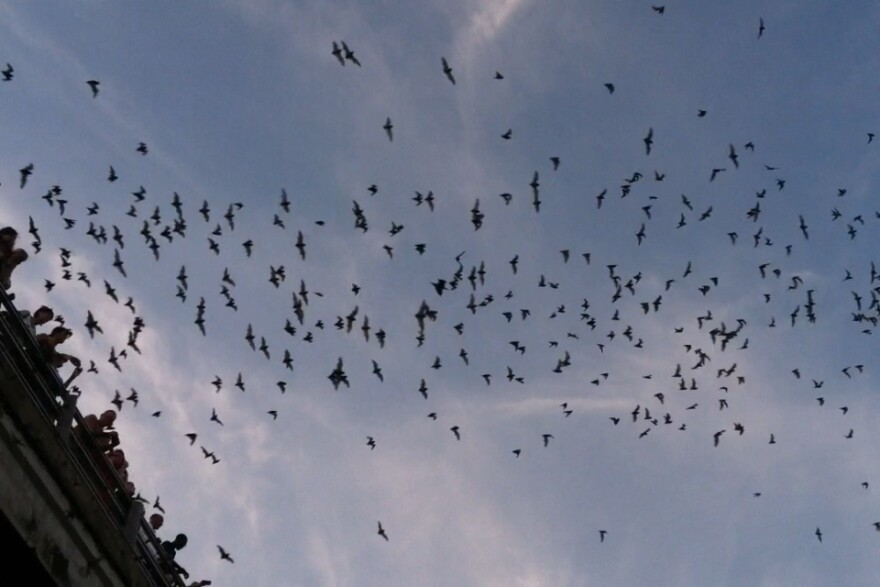The bats that live under Austin’s Congress Avenue Bridge are back from their winter home in Mexico. But this year, Texas is a little more dangerous for bats. That’s because an invasive fungus that decimates bat populations is now officially in the state.
It’s called white-nose syndrome, because of the white growth that appears on a bat’s nose while it hibernates.
“The white-nose causes them to wake up, stay awake. They lose their energy reserves, and they basically starve to death,” Michael Morrison, a professor of wildlife ecology at Texas A&M, said.
He said researchers have now found the fungus in some Texas counties around the panhandle, but they haven’t found any bats afflicted with the syndrome itself.
“From past experience in the states more to the east that have gotten this, the white-nose syndrome seems to show a year or two later," he said.
White-nose has decimated some bat colonies in the Northeast and Midwest. But there’s reason to think Texas bats may fare better. And it goes back to that hibernation.
A lot of bats in Texas don’t hibernate very much. Take the Mexican free-tailed bats that live under the Congress Avenue Bridge. They generally migrate south for the winter.

“We’re optimistic that a species like the Mexican free-tailed bats, they may not die,” said Winifred Frick with Bat Conservation International. “But they could certainly be picking up the fungus and moving it around.”
Another group that could move the fungus around? Humans.
Frick said now that the fungus is in Texas, it’s more important than ever for people who spend time in caves to clean and disinfect their gear and clothes between cave visits. Texas Parks and Wildlife is also asking property owners with bat colonies on their property to contact them for free testing for the white-nose fungus.
Ultimately, researchers hope the spread of white-nose syndrome can be slowed long enough for treatments to be found.
“This year there were a couple different field trials of a couple different options. We don’t have the results for those yet,” Frick said.
In the meantime, researchers plan on returning to Texas bat colonies next winter to see if any bats are showing the telltale white fungal growth that could mean their doom.





